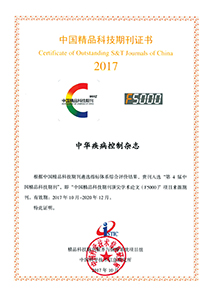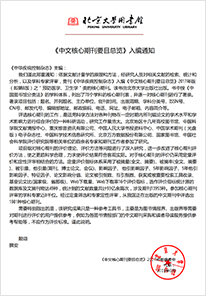2017 Vol. 21, No. 8
Display Method:
2017, 21(8): 755-757.
doi: 10.16462/j.cnki.zhjbkz.2017.08.001
Abstract:
Analysis of chronic disease prevalence and its equity among working population in four Cities, China
2017, 21(8): 758-761,766.
doi: 10.16462/j.cnki.zhjbkz.2017.08.002
Abstract:
2017, 21(8): 762-766.
doi: 10.16462/j.cnki.zhjbkz.2017.08.003
Abstract:
2017, 21(8): 767-771.
doi: 10.16462/j.cnki.zhjbkz.2017.08.004
Abstract:
2017, 21(8): 772-774,779.
doi: 10.16462/j.cnki.zhjbkz.2017.08.005
Abstract:
2017, 21(8): 775-779.
doi: 10.16462/j.cnki.zhjbkz.2017.08.006
Abstract:
2017, 21(8): 780-783,788.
doi: 10.16462/j.cnki.zhjbkz.2017.08.007
Abstract:
2017, 21(8): 784-788.
doi: 10.16462/j.cnki.zhjbkz.2017.08.008
Abstract:
2017, 21(8): 789-791.
doi: 10.16462/j.cnki.zhjbkz.2017.08.009
Abstract:
2017, 21(8): 792-795.
doi: 10.16462/j.cnki.zhjbkz.2017.08.010
Abstract:
2017, 21(8): 796-800.
doi: 10.16462/j.cnki.zhjbkz.2017.08.011
Abstract:
2017, 21(8): 805-808,817.
doi: 10.16462/j.cnki.zhjbkz.2017.08.013
Abstract:
2017, 21(8): 809-812.
doi: 10.16462/j.cnki.zhjbkz.2017.08.014
Abstract:
2017, 21(8): 813-817.
doi: 10.16462/j.cnki.zhjbkz.2017.08.015
Abstract:
2017, 21(8): 818-821.
doi: 10.16462/j.cnki.zhjbkz.2017.08.016
Abstract:
2017, 21(8): 822-826.
doi: 10.16462/j.cnki.zhjbkz.2017.08.017
Abstract:
2017, 21(8): 827-829,834.
doi: 10.16462/j.cnki.zhjbkz.2017.08.018
Abstract:
2017, 21(8): 830-834.
doi: 10.16462/j.cnki.zhjbkz.2017.08.019
Abstract:
2017, 21(8): 835-840,851.
doi: 10.16462/j.cnki.zhjbkz.2017.08.020
Abstract:
2017, 21(8): 841-845.
doi: 10.16462/j.cnki.zhjbkz.2017.08.021
Abstract:
2017, 21(8): 846-851.
doi: 10.16462/j.cnki.zhjbkz.2017.08.022
Abstract:
2017, 21(8): 852-854.
doi: 10.16462/j.cnki.zhjbkz.2017.08.023
Abstract:
2017, 21(8): 855-856,859.
doi: 10.16462/j.cnki.zhjbkz.2017.08.024
Abstract:
2017, 21(8): 857-859.
doi: 10.16462/j.cnki.zhjbkz.2017.08.025
Abstract:
2017, 21(8): 860-862.
doi: 10.16462/j.cnki.zhjbkz.2017.08.026
Abstract:


 Email alert
Email alert RSS
RSS Abstract
Abstract PDF
PDF





